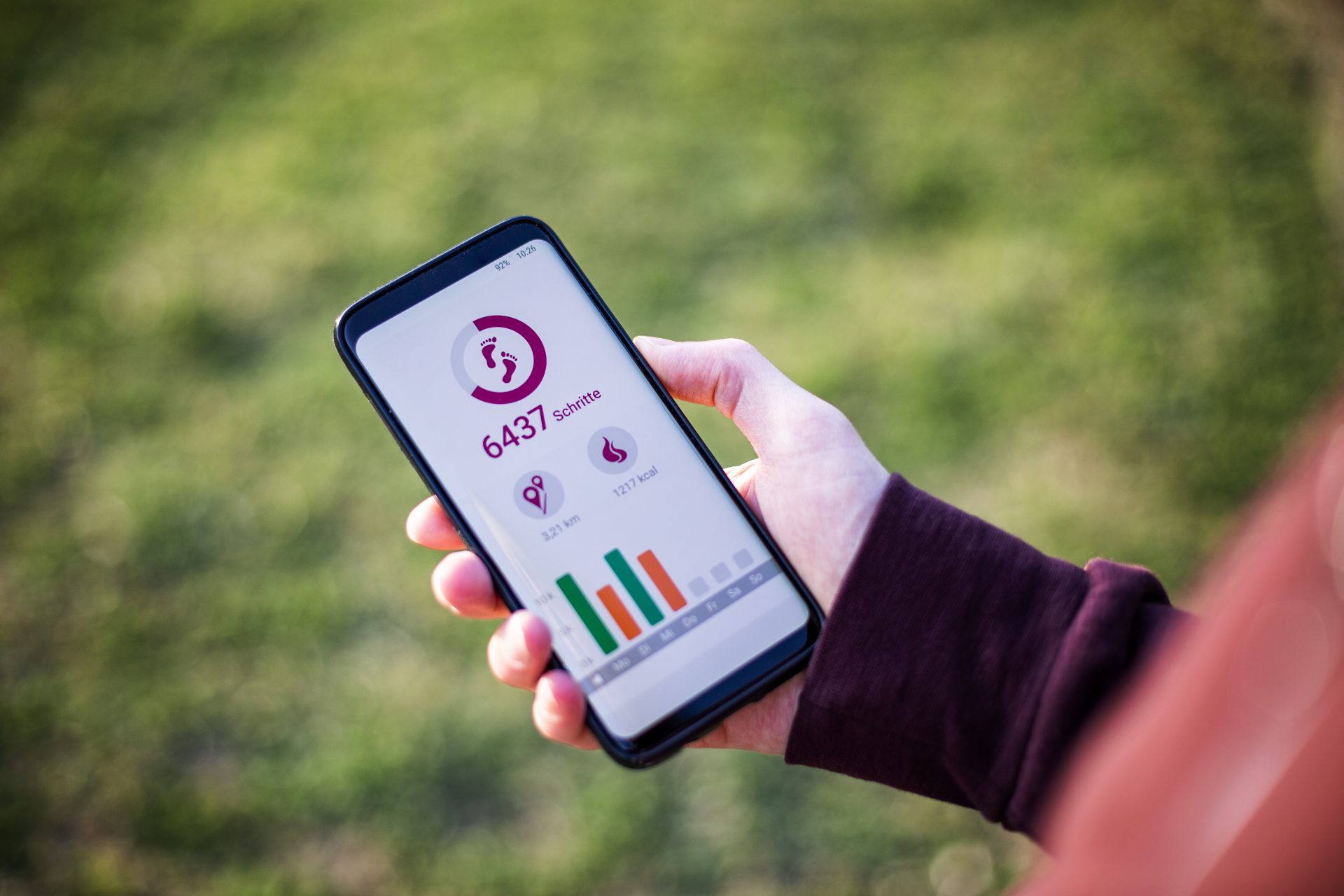Whatever fitness tribe you belong to, chances are that you’re still tied to the whole ‘10,000 steps a day’ goal. But is that actually something we should still be striving for?
Back in lockdown, my former housemate Megan used to drag me out to walk circles around our tiny garden. The reason why? She hadn’t hit her goal of 10,000 steps, and wanted to close the rings on her fitness tracker.
Fast forward three years, and loads of us are still chasing that goal. The benefits of walking for mental and physical health are all to real, so it’s no wonder that loads of us are still pacing around parks on our lunch breaks or running up and down stairs before bedtime just to feel the satisfying vibration of our trackers celebrating that 10,000th step.
But is it genuinely necessary to aim for 10,000 steps every single day – even when it’s icy outside? Not according to Shana Minei Spence, a nutritionist from Brooklyn, who’s been sharing the history of the 10,000 step goal on TikTok.
The recommendations for 10,000 steps a day is actually a marketing ploy that dates back to a Japanese pedometer brand in the 1960s. The device, called manpo-kei, translates to 10,000 step meter. 50 years later, we’re all still wedded to it.
Spence says: “We have taken that number and promoted it as the ultimate marker of health,” before going on to suggest that if you can’t hit that, perhaps it’s because you don’t like walking or physically can’t do such a large volume. If your goal is to be less sedentary, then trying to achieve an arbitrary number isn’t necessarily the best way to go about it.
Now, Spence admits that even she gets excited on the days when she does do 10,000 steps, and that’s the same with a lot of us. Having such an ambitious goal can be a great thing, especially now that more people than ever are hybrid working. Working from home part of the week means that we’re running the risk of missing out on ‘incidental steps’, says walking expert Marie Murphy. She’s the leader of the scientific body reviewing the UK’s adult physical activity guidelines. “Even if you’re not an active commuter, you still normally walk to your car, to the station, to your office building,” she tells Stylist.
“The difference between working from home and being in a normal office setting is big; you’d previously be getting up to talk to people and even the toilets are further away than they are in your house. These ‘incidental’ steps help to break up sedentary lifestyles.”

While I’m not wedded to a tracker like my old housemate, I do use an app to loosely check if I’ve been moving enough throughout the day. When I work in the office, I go beyond 10,000 steps without a problem. I roll out of bed and walk straight to the gym, where I complete a strength workout before commuting to work. My days are spent running up and down stairs in the office and popping out to grab some lunch, before trudging 20 minutes home from the Tube station in the evening.
When I work from home, however, I’m less active – and that fact has made me more aware of my movement than ever. But is the need to clock in a minimum step count per day misguided? Research by the University of Massachusetts suggests it might be. Scientist found that while walking at least 7,000 steps a day reduced middle-aged people’s risk of premature death by 50-70%, walking more than 10,000 steps per day didn’t have any extra benefits.
You may also like
Walking benefits: why is it so much easier to open up on a walk than anywhere else?
This isn’t the first paper to find that 10,000 isn’t necessarily the best number. Harvard Medical School studies have found that women who averaged approximately 4,400 steps a day had a significantly lower mortality rate than those who averaged approximately 2,700 steps a day. The more steps the women did, the lower the mortality rate – but only until they hit 7,500 steps. At this point, the health benefits levelled out. So if the extra two or three thousand steps don’t help, why are we so obsessed with them?
However, the thing that gets lost in the step count glorification is that the UK doesn’t actually have guidelines on how many steps we should be doing a day. Rather, the advice is that we get at least 150 minutes of moderate-intensity activity over the course of the week.
You may also like
How fast you walk is just as important as how many steps you do a day, experts confirm
Of course, quantity of movement and your step count are correlated: “Evidence shows that people who do 10,000 steps generally tend to meet the guidelines of 150 minutes of exercise,” Murphy explains. “But it’s because of the fact that in order to get that many steps in, people will have had to have added in a brisk walk or a run, or some sort of formal activity into their day.”
It’s raising the heart rate, rather than stepping, that really counts. In 2018, Public Health England issued advice for people to “focus on brisk walking, not just 10,000 steps, to improve health”, advising that people start with 10 minutes of focused activity a day.
So, no, it isn’t the end of the world if the only steps you’re losing out on are the ones you take from your front door to your car – as long as you’re getting in some heart-rate-rising steps, and follow up with some exercise in the home.
You may also like
Just 10 minutes of exercise a day could help your mental health during lockdown
“The obsession with hitting 10,000 steps is misguided, especially in the current environment,” Murphy adds. “It’s better to focus on replacing the current step deficit with something structured, like a cardio workout, gardening, playing football with your kids, or anything that will get you to the moderate-intensity target.”
So that’s what I’ve done. Rather than forcing myself to get my steps in, I’ve added an extra cardio session on the end of my workouts after my upper body circuits or lower body supersets. It means I’m getting my heart beating faster in order to compensate for a lack of other movement, and it beats going for a stress walk around the block after a long day of work. But one thing I’m definitely not doing anymore? Pacing my garden.
Up for a challenge this summer? Join us at one of our Strong Women Treks this June for a day of nature, fun and connection. Find out more.
Images: Getty
Source: Read Full Article
